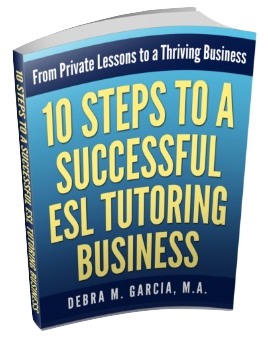Steps for Teaching Reading
to ESL Students
ESL Reading Strategies
An effective lesson plan teaching reading to ESL students, or EFL students, needs to have a structure. Below are the steps you can use to prepare a lesson plan to teach English reading skills after you have selected an appropriate reading passage.
Step 1: Engage the student. The first step in teaching reading to ESL students is to get the students "warmed-up" by engaging them in the topic of the reading passage.
The purpose of engaging the student is to introduce the theme or topic of the reading. The student can be engaged, for example, by using visuals or a "warm-up" conversation. If you use visuals, you can ask a question such as, "who do you think lives here?" The ESL teacher should elicit responses from the students.
Remember that lessons should be student-focused, so the majority of the talking should be done by the students.
Step 2: Pre-teach new vocabulary. When preparing ESL reading activities, decide the vocabulary (lexis) that is critical for the ESL learners to know to understand the story.
Decide how you will teach the new words or key words. You don't have to teach every word that you think the student may not know, just those that are critical to understanding the reading passage.
This part of the lesson shouldn't take too much time.
Step 3: Ask a focus question. A lesson plan teaching reading to ESL students should have a focus question.
Write a question about a detail that is three-quarters of the way through the text for ESL beginning reading exercises.
For advanced level ESL students, ask a "gist" question. This is something that the students have to deduce from the reading passage.
Be sure to write the focus question on the board so that all students can see it.
Step 4: The students read. Finally, the students read! Be sure to allow enough time for the students to read the entire passage.
You'll have to watch the students to see how they are doing and when they're done. If one student is taking a particularly long time, you can decide whether or not you should wait until he or she finishes.
Step 5: Ask questions about the reading. First, ask the students the focus question again.
In addition to the focus question, ask the students a few other questions about the reading. If the students are unable to answer the questions, allow the students to read the passage again.
Step 6: Follow up with a task. A lesson plan teaching reading to ESL students should always be followed up with a task. The task can be oral or written. This allows students to bring in their knowledge on the topic, and helps to reinforce comprehension and the learning process.
Step 7 (optional): Follow up with an activity. If you have enough time (or too much time left over!), you can include another ESL activity. This could be additional writing practice or speaking practice.
It's helpful to have a specific activity built in to your lesson plan, but you can also be flexible. If something comes up that the students seem particularly interested in, use this topic for the students to write about or to continue with a conversation.
In addition to teaching reading comprehension, the ESL teacher can also use these ESL reading strategies to teach grammar embedded in the reading passage.
Additional Resource
Here are more tips on writing the best ESL lesson plans.
From Teaching Reading to ESL Students to Teaching ESL to Adults Home


New! Comments
Have your say about what you just read! Leave me a comment in the box below.